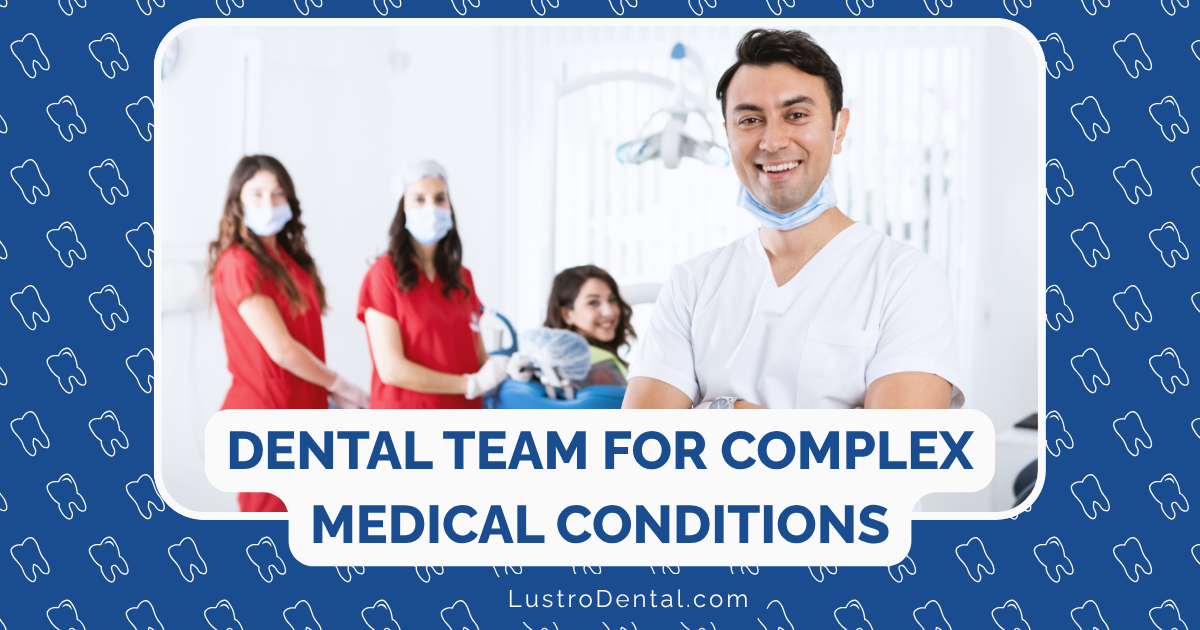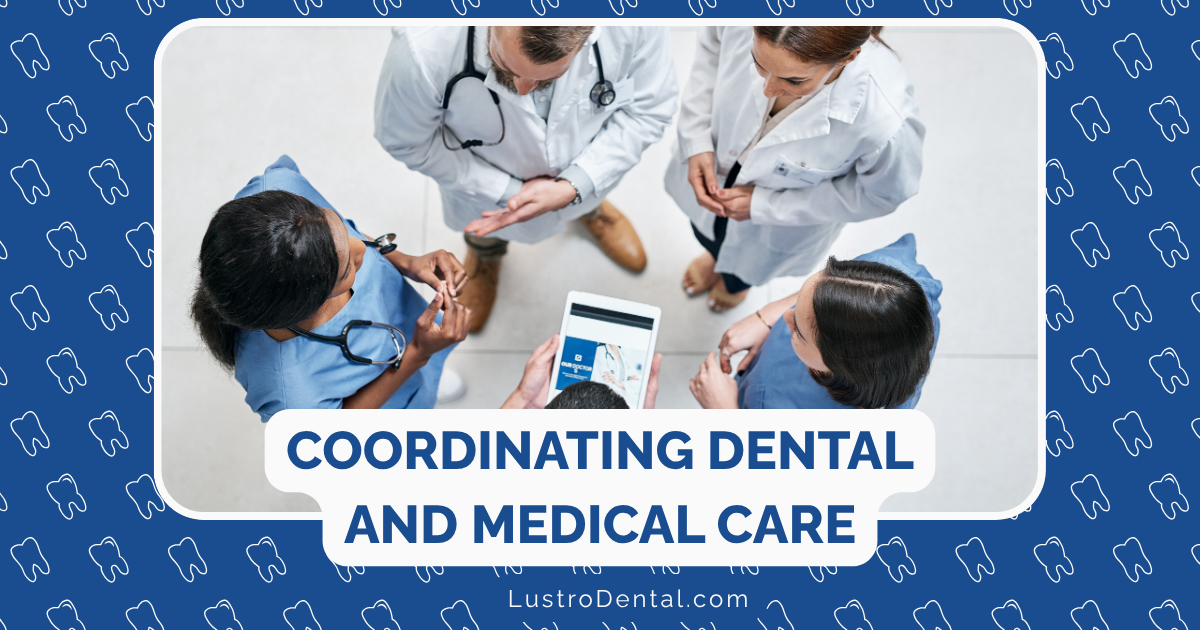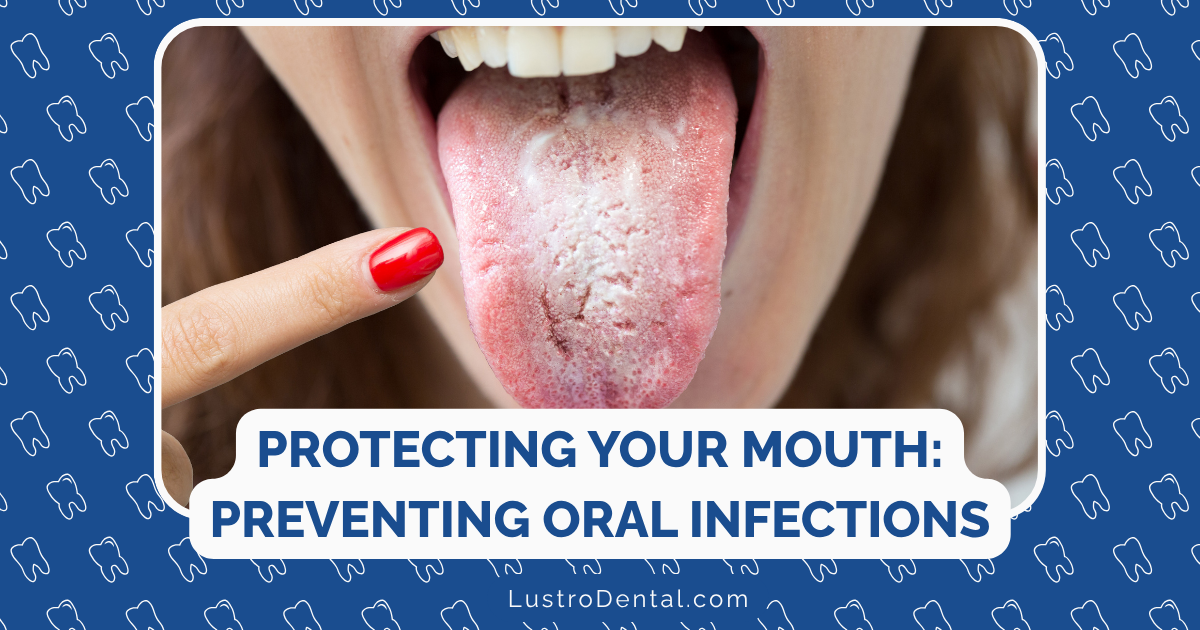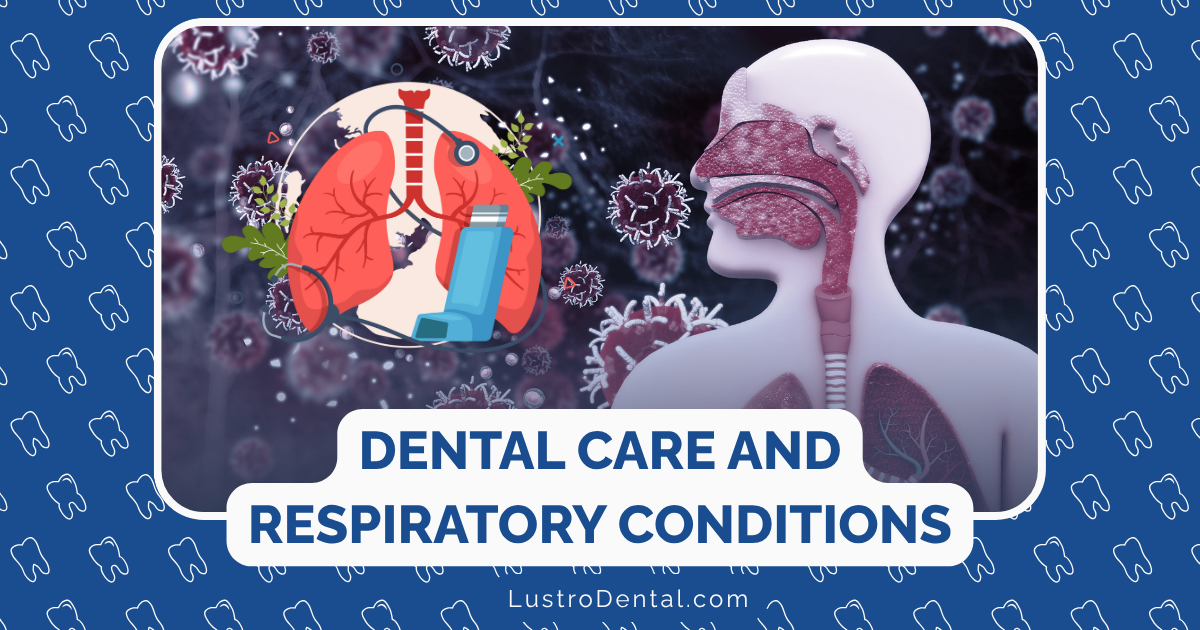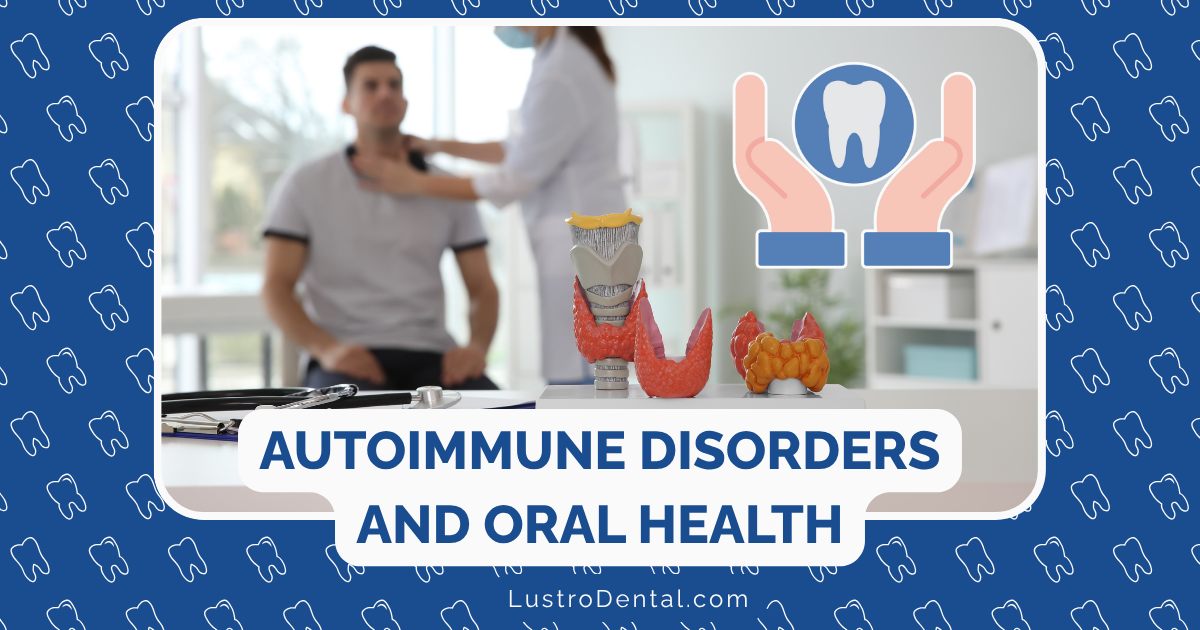Extra Precautions: Dental Care Protocols for Immunocompromised Patients
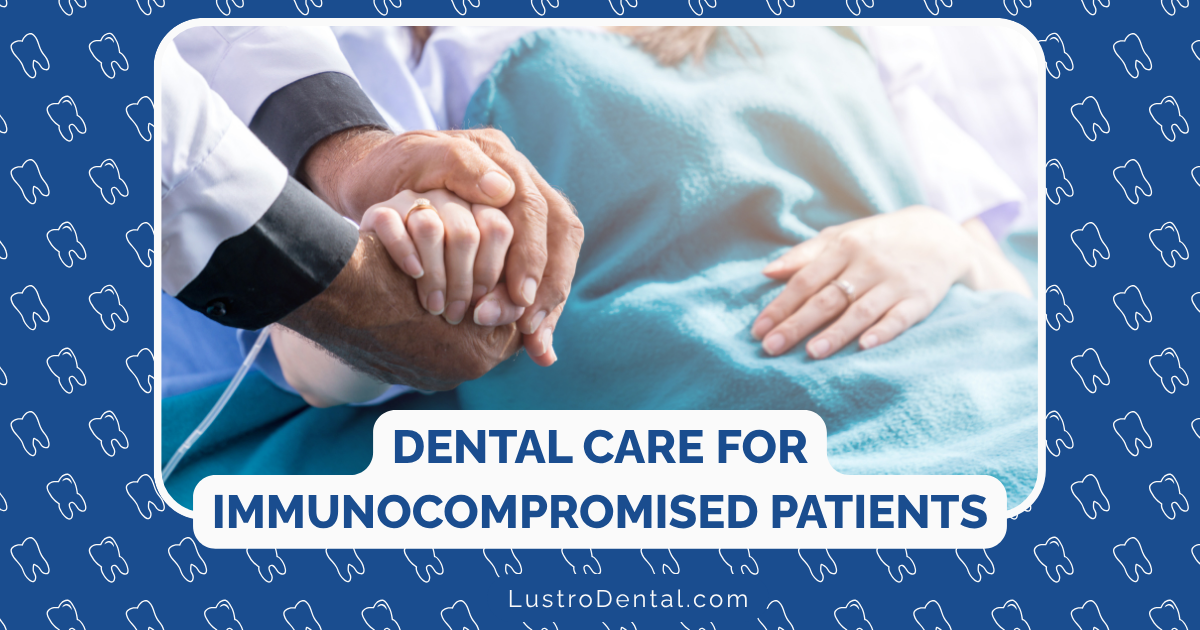
Providing dental care to immunocompromised patients requires a delicate balance between addressing oral health needs and protecting these vulnerable individuals from potential infections. With immune system deficiencies affecting a significant portion of the population—including those with HIV/AIDS, cancer patients undergoing chemotherapy, organ transplant recipients, and individuals with autoimmune disorders—dental professionals must implement enhanced protocols to ensure safe and effective treatment.
According to the College of Dental Hygienists of Ontario, immunocompromised patients are at significantly increased risk of infection, with fever being a critical warning sign. This heightened susceptibility makes routine dental procedures potentially risky without proper precautions.
This comprehensive guide explores the essential protocols and adaptations necessary for providing safe dental care to immunocompromised patients, helping both dental professionals and patients navigate these complex situations.
Understanding Immunocompromised Conditions
Types of Immunocompromised States
Immunocompromised conditions can be broadly categorized as:
- Primary (Innate) Immunodeficiencies:
- Congenital disorders present from birth
- Examples include severe combined immunodeficiency (SCID), common variable immunodeficiency (CVID), and X-linked agammaglobulinemia
- Secondary (Acquired) Immunodeficiencies:
- HIV/AIDS: Affects CD4+ T cells, compromising cellular immunity
- Cancer and chemotherapy: Treatment often suppresses bone marrow function and immune cell production
- Organ transplantation: Requires immunosuppressive medications to prevent rejection
- Autoimmune disorders: Conditions like lupus, rheumatoid arthritis, and their treatments can suppress immune function
- Corticosteroid therapy: Long-term use impairs immune response
- Splenectomy: Removal of the spleen reduces immune function
- Malnutrition: Severe nutritional deficiencies impact immune system effectiveness
- Diabetes: Poorly controlled diabetes can impair immune function
Impact on Oral Health
Immunocompromised patients often experience unique oral health challenges:
- Increased susceptibility to infections: Fungal, viral, and bacterial infections occur more frequently and with greater severity
- Delayed healing: Tissue repair processes may be compromised
- Exaggerated inflammatory responses: Some conditions may cause heightened inflammation despite immune suppression
- Medication-related side effects: Dry mouth, gingival hyperplasia, and taste alterations
- Oral manifestations of systemic conditions: Specific lesions or conditions that indicate underlying disease
According to research published in PMC, oral diseases in immunocompromised people tend to be more common with poor oral hygiene, malnutrition, and tobacco use, with candidiasis being one of the most common lesions.
Pre-Treatment Assessment and Planning
Comprehensive Medical History
Before providing dental treatment to immunocompromised patients, a thorough medical assessment is essential:
- Detailed medical history:
- Specific diagnosis and current status of the immunocompromising condition
- Recent laboratory values (white blood cell count, absolute neutrophil count, platelet count)
- Current medications, particularly immunosuppressants
- History of infections or complications
- Recent hospitalizations
- Contact information for treating physicians
- Consultation with medical providers:
- Establish communication with the patient’s physician
- Determine current immune status and treatment stability
- Discuss the need for antibiotic prophylaxis
- Coordinate timing of dental treatment with medical therapy
- Risk assessment:
- Evaluate the invasiveness of planned dental procedures
- Assess the patient’s current immune function
- Consider the urgency of dental treatment needs
- Evaluate the risk-benefit ratio for each procedure
Treatment Planning Modifications
Treatment planning for immunocompromised patients often requires modifications:
- Timing considerations:
- Schedule dental treatment during periods of optimal immune function
- For cancer patients, coordinate with chemotherapy cycles (typically best 17-21 days after chemotherapy when blood counts have recovered)
- For transplant patients, consider waiting 3-6 months post-transplant for non-emergency care
- Procedure prioritization:
- Address acute infections and pain immediately
- Eliminate potential sources of infection before immunosuppression worsens
- Consider more definitive treatments (extraction vs. root canal) based on long-term prognosis
- Implement aggressive preventive measures to minimize future invasive needs
- Treatment setting:
- Evaluate whether treatment can be safely provided in an outpatient setting
- Consider hospital-based dental care for severely immunocompromised patients
- Morning appointments are preferred when staff are fresh and facilities are cleanest
Infection Control Protocols
Enhanced Standard Precautions
While standard precautions should be implemented for all patients, additional measures are warranted for immunocompromised individuals:
- Personal protective equipment (PPE):
- Proper hand hygiene before and after gloving
- Use of masks, gloves, protective eyewear, and gowns
- Change PPE between patients
- Consider N95 respirators for certain procedures
- Environmental considerations:
- Schedule immunocompromised patients as the first appointment of the day when the environment is cleanest
- Enhanced surface disinfection before and after treatment
- Use of disposable barriers on surfaces and equipment
- Proper ventilation systems to reduce airborne contaminants
- Minimize unnecessary items in the treatment area
- Instrument sterilization:
- Strict adherence to sterilization protocols
- Regular monitoring of sterilization effectiveness
- Use of single-use disposable items when possible
According to the National Center for Biotechnology Information, infection prevention and control measures in dental settings aim to minimize the transmission of pathogens between patients and dental healthcare workers, with standard precautions implemented for all patients and transmission-based precautions applied for patients at risk of spreading infectious diseases.
Water Quality Management
Dental unit waterlines can harbor microorganisms that pose minimal risk to healthy individuals but may be dangerous for immunocompromised patients:
- Water quality protocols:
- Regular testing of dental unit water quality
- Use of independent water reservoirs with treated water
- Implementation of water line treatments and flushing protocols
- Consider sterile water or saline for surgical procedures
- Aerosol reduction:
- Use of high-volume evacuation
- Rubber dam isolation when possible
- Minimizing use of ultrasonic scalers and high-speed handpieces
- Consider hand instrumentation alternatives
Antibiotic Prophylaxis Considerations
Current Guidelines
The use of antibiotic prophylaxis for immunocompromised patients remains somewhat controversial, with varying recommendations:
- American Dental Association (ADA) recommendations:
- According to the ADA, there are relatively few patient subpopulations for whom antibiotic prophylaxis is indicated
- Consultation with the patient’s physician is advised for managing patients with immune compromise
- Patient-specific considerations:
- Neutropenic patients (absolute neutrophil count <500 cells/mm³) generally require prophylaxis
- Severely immunocompromised patients (e.g., recent transplant recipients, those undergoing active chemotherapy)
- Patients with indwelling catheters or prosthetic devices
- Procedure-based considerations:
- Invasive dental procedures that involve manipulation of gingival tissue or perforation of oral mucosa
- Procedures likely to induce significant bleeding
- Routine preventive procedures typically do not require prophylaxis
Recommended Regimens
When antibiotic prophylaxis is indicated:
- Standard regimen:
- Amoxicillin: 2g orally 30-60 minutes before procedure (adults)
- Amoxicillin: 50mg/kg orally 30-60 minutes before procedure (children)
- For penicillin-allergic patients:
- Clindamycin: 600mg orally 30-60 minutes before procedure (adults)
- Clindamycin: 20mg/kg orally 30-60 minutes before procedure (children)
- Azithromycin or clarithromycin: 500mg orally 30-60 minutes before procedure (adults)
- Azithromycin or clarithromycin: 15mg/kg orally 30-60 minutes before procedure (children)
- Timing considerations:
- Ideally administered 30-60 minutes before the procedure
- Can be given up to 2 hours after the procedure if forgotten
According to Digital Editions Walsworth, the decision to use antibiotic prophylaxis should be made on an individual basis, considering the patient’s medical history and risk factors.
Specific Protocols for Different Immunocompromised Conditions
HIV/AIDS Patients
Patients with HIV require special considerations:
- Treatment modifications:
- Evaluate CD4+ count and viral load to assess immune status
- CD4+ count >500 cells/mm³: standard dental care generally safe
- CD4+ count 200-500 cells/mm³: increased risk of complications, consider antibiotic prophylaxis for invasive procedures
- CD4+ count <200 cells/mm³: high risk, consult with physician before invasive procedures
- Oral manifestations to monitor:
- Oral candidiasis (thrush)
- Oral hairy leukoplakia
- Kaposi’s sarcoma
- Linear gingival erythema
- Necrotizing ulcerative periodontitis
- Aphthous ulcers
- Medication considerations:
- Be aware of potential interactions between dental medications and antiretroviral therapy
- Monitor for xerostomia (dry mouth) as a side effect of medications
According to the American Dental Association, HIV-related oral conditions occur in 30-80% of HIV-infected individuals, and xerostomia is reported in up to 40% of HIV-positive patients.
Cancer Patients
Patients undergoing cancer treatment have unique needs:
- Treatment timing:
- Before chemotherapy: eliminate sources of infection, perform invasive procedures at least 2 weeks before chemotherapy begins
- During chemotherapy: emergency care only when blood counts are adequate, consult with oncologist
- After chemotherapy: delay elective treatment until immune recovery (typically 3-6 months)
- Hematological considerations:
- White blood cell count >2,000 cells/mm³ and absolute neutrophil count >1,000 cells/mm³ generally safe for routine dental care
- Platelet count >50,000/mm³ needed for most dental procedures
- Platelet count <50,000/mm³ may require platelet transfusion before invasive procedures
- Radiation therapy considerations:
- Patients with head and neck radiation have increased risk of osteoradionecrosis
- Antibiotic prophylaxis often recommended for extractions in previously irradiated areas
- Hyposalivation management critical for reducing caries risk
Transplant Recipients
Organ transplant patients require lifelong immunosuppression:
- Treatment timing:
- Pre-transplant: eliminate all sources of infection
- Post-transplant (0-3 months): emergency care only with physician consultation
- Post-transplant (3-6 months): limited care with antibiotic prophylaxis
- Post-transplant (>6 months with stable graft function): routine care with consideration for prophylaxis
- Medication interactions:
- Cyclosporine can cause gingival hyperplasia
- Tacrolimus may interact with certain antibiotics and antifungals
- Corticosteroids can mask signs of infection
- NSAIDs may affect renal function
- Special concerns:
- Increased risk of oral candidiasis
- Higher prevalence of oral lesions, including viral infections
- Delayed wound healing
According to Clinical Info HIV, a multidisciplinary team should manage people with HIV before, during, and after transplant, and transplant candidates should be up-to-date on their vaccination schedule.
Clinical Procedures and Adaptations
Diagnostic Procedures
- Radiographic examinations:
- Digital radiography preferred to reduce radiation exposure
- Extraoral radiographs when possible to reduce intraoral manipulation
- Proper barrier protection for sensors and equipment
- Oral examination:
- Thorough soft tissue examination to detect early signs of infection or disease
- Regular oral cancer screening
- Documentation of oral manifestations of systemic disease
Preventive Procedures
- Professional cleanings:
- Generally safe for most immunocompromised patients
- Consider hand instrumentation instead of ultrasonic scaling to reduce aerosols
- Use of antimicrobial mouth rinses before procedures
- Fluoride application:
- Recommended for patients with xerostomia
- Consider prescription-strength fluoride for high-risk patients
- Custom trays for home fluoride application
- Sealants:
- Beneficial preventive measure to reduce caries risk
- Minimal risk procedure for most immunocompromised patients
Restorative Procedures
- Conservative dentistry:
- Rubber dam isolation to reduce bacterial contamination
- Careful tissue management to minimize trauma
- Consider glass ionomer materials for their antimicrobial properties
- Endodontic considerations:
- Single-visit treatment when possible to reduce infection risk
- Careful determination of working length to avoid overinstrumentation
- Thorough irrigation protocols
- Consider antibiotic coverage for necrotic cases
Surgical Procedures
- Extractions and oral surgery:
- Antibiotic prophylaxis based on immune status and procedure invasiveness
- Atraumatic technique to minimize tissue damage
- Primary closure when possible
- Careful hemostasis with local measures
- Post-operative care:
- Detailed post-operative instructions
- Close follow-up schedule
- Early intervention for complications
- Consider chlorhexidine rinses to prevent infection
Patient Education and Home Care
Oral Hygiene Instructions
Proper home care is crucial for immunocompromised patients:
- Brushing technique:
- Soft-bristled toothbrush, replaced frequently
- Gentle but thorough brushing at least twice daily
- Consider powered toothbrushes for efficiency
- Proper cleaning of toothbrushes and storage
- Interdental cleaning:
- Daily flossing or use of interdental brushes
- Careful technique to avoid tissue trauma
- Water flossers may be beneficial for some patients
- Supplemental aids:
- Antimicrobial mouth rinses (alcohol-free)
- Fluoride rinses or gels
- Saliva substitutes for xerostomia
According to Science Direct, recommended oral hygiene for immunodeficient patients includes brushing teeth and tongue 2 to 3 times per day and flossing once a day.
Warning Signs and Emergency Management
Patients should be educated about signs requiring immediate attention:
- Warning signs:
- Fever (often the first sign of infection)
- Persistent pain or swelling
- Bleeding that doesn’t stop with pressure
- White or unusual patches in the mouth
- Ulcers that don’t heal within 2 weeks
- Emergency protocols:
- Direct contact information for dental provider
- When to seek emergency dental vs. medical care
- Documentation of medical conditions and medications to share with emergency providers
Interdisciplinary Communication
Coordination with Medical Providers
Effective communication between dental and medical providers is essential:
- Consultation requests:
- Specific questions about patient’s immune status
- Clear description of planned dental procedures
- Request for recommendations regarding antibiotic prophylaxis
- Information about potential medication interactions
- Documentation:
- Detailed treatment notes
- Communication logs with medical providers
- Updated medical history at each visit
- Laboratory values when applicable
- Shared decision-making:
- Involving the patient in treatment planning
- Weighing risks and benefits of different approaches
- Considering quality of life implications
Conclusion: Balancing Oral Health Needs and Safety
Providing dental care to immunocompromised patients requires a thoughtful, individualized approach that balances addressing oral health needs with minimizing infection risks. While these patients may require additional precautions, most can safely receive necessary dental treatment with proper planning and modifications.
Key principles to remember include:
- Thorough assessment of the patient’s immune status and medical condition
- Close collaboration with medical providers
- Enhanced infection control protocols
- Judicious use of antibiotic prophylaxis when indicated
- Individualized treatment planning based on risk assessment
- Patient education about the importance of oral health and home care
- Regular follow-up to monitor oral health status
By implementing these specialized protocols, dental professionals can provide safe, effective care to immunocompromised patients, helping them maintain oral health despite their underlying medical challenges.


